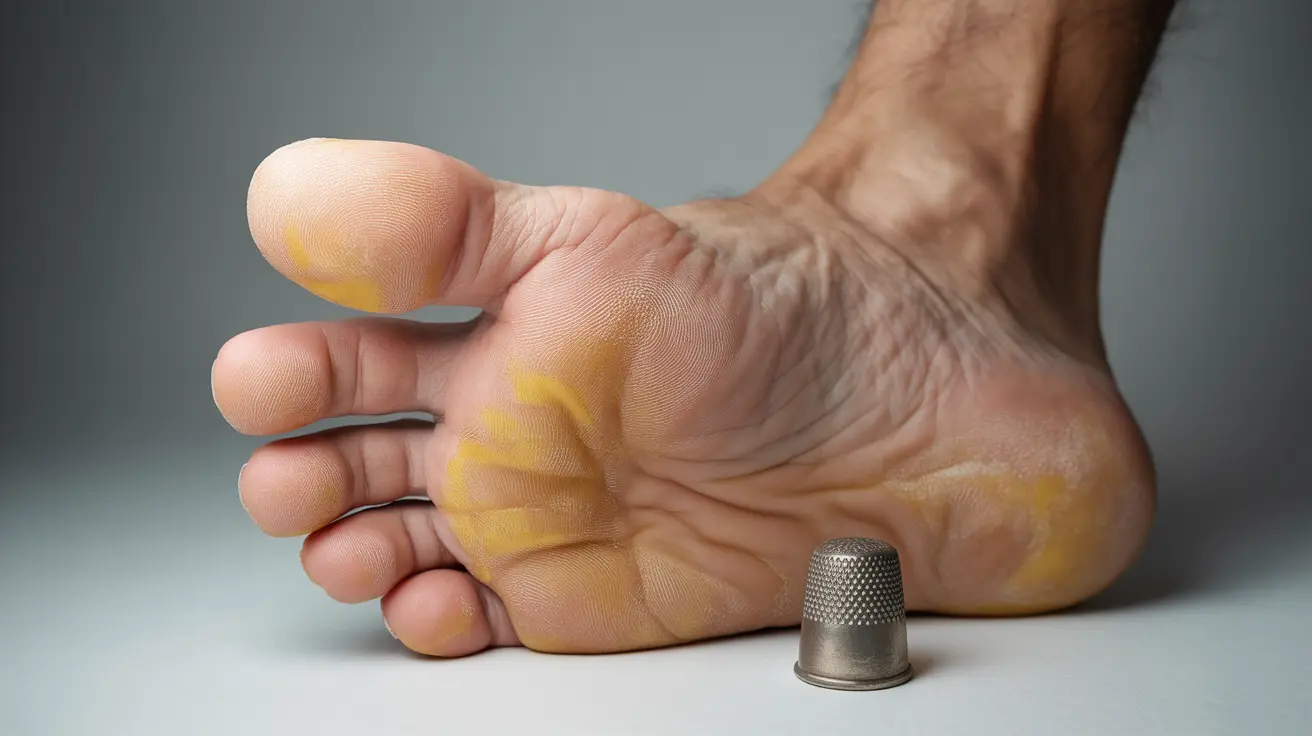Developing calluses and dry skin on the top of your toes is a common foot condition that can cause discomfort and concern. While these areas of thickened skin often develop as a protective response to friction or pressure, understanding their causes and proper treatment methods is essential for maintaining healthy feet.
In this comprehensive guide, we'll explore why calluses form on your toes, how to identify them correctly, and the most effective ways to treat and prevent them. We'll also help you understand when these common foot issues might require professional medical attention.
Understanding Calluses and Dry Skin on Toes
Calluses are areas of thickened skin that develop in response to repeated friction or pressure. When they appear on the top of toes, they often result from ill-fitting shoes or unusual walking patterns that create repeated rubbing against footwear.
Unlike regular dry skin, calluses have distinct characteristics:
- Thicker, harder texture than surrounding skin
- Yellowish or grayish color
- Less sensitive to touch than normal skin
- Waxy or rough appearance
Common Causes of Toe Calluses
Several factors can contribute to the development of calluses and dry skin on top of toes:
- Tight or poorly fitted shoes
- Abnormal toe positioning while walking
- Structural foot deformities
- Repeated friction from physical activities
- Lack of proper foot moisturization
- Medical conditions affecting skin health
Treatment Options for Toe Calluses
Home Remedies
Many cases of calluses and dry skin on toes can be effectively treated at home:
- Regular use of foot moisturizer
- Gentle exfoliation with pumice stone
- Wearing properly fitted shoes
- Using protective padding or toe caps
- Soaking feet in warm water with Epsom salt
Medical Treatments
For more severe cases, professional treatment options may include:
- Professional callus removal
- Prescription moisturizers or medications
- Custom orthotics
- Treatment of underlying conditions
Prevention Strategies
Preventing calluses and dry skin on top of toes involves several key practices:
- Wearing properly sized shoes with adequate toe room
- Using moisture-wicking socks
- Regular foot inspection and care
- Maintaining proper foot hygiene
- Addressing any gait abnormalities
Frequently Asked Questions
What causes callus formation and dry skin on the top of toes?
Calluses and dry skin on top of toes primarily develop due to friction from ill-fitting shoes, repeated pressure during walking or running, and inadequate moisturization. Certain medical conditions and foot structure abnormalities can also contribute to their formation.
How can I tell the difference between a callus and a corn on my toes?
Calluses typically appear as broad, flat areas of thickened skin, while corns are smaller, more concentrated areas with a hard center. Calluses usually form on weight-bearing areas or areas of friction, while corns often develop on non-weight-bearing surfaces of toes.
What are the best home treatments for dry, thickened skin or calluses on top of toes?
Effective home treatments include regular moisturizing, gentle exfoliation with a pumice stone after bathing, wearing properly fitted shoes, and using protective padding. Soaking feet in warm water can also help soften calluses before treatment.
When should I see a doctor about painful or persistent calluses on my toes?
Seek medical attention if calluses become painful, crack or bleed, show signs of infection, or don't improve with home treatment. People with diabetes or circulation problems should have any foot issues evaluated by a healthcare provider.
How can wearing the right shoes help prevent calluses and dry skin on my toes?
Proper footwear should provide adequate toe room, support the natural shape of your foot, and minimize friction. Shoes that are too tight or too loose can cause excessive rubbing and pressure, leading to callus formation. Choose shoes with a wide toe box and appropriate arch support for your foot type.




